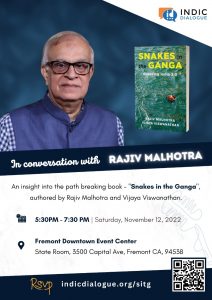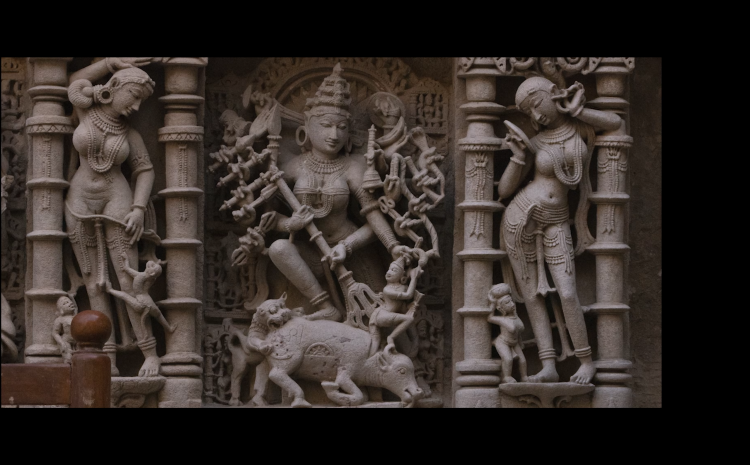
The significance of ancient texts and sculptures in the evolution of Indian classical dance – Kathak
By Abha Auti
When I started learning Kathak, I used to think it was just a dance of fast-paced pirouettes and footwork. However, as I explored deeper, I realized it was a rich and complex Indian classical dance form. It involves precise movements of the body, emphasizing Bhaava or emotions. It’s about control, balance, and coordination based on a structured technique, theory, and minute details of every movement. Masterful storytelling is a significant component of Indian classical dances. These dance forms allow us to preserve and transmit rich cultural narratives while showcasing the art form’s flair and expressiveness.
But then again, this was just the beginning. A few years later, as I got involved in the research of my Guruji, Mrs.Roshan Datye, around two decades ago, when I discovered a treasure of the deeply rooted traditional aesthetic and magnificence of the ‘Indian Classical Dance form – Kathak’ to its most captivating limits.
(Abhisarika Naayika, Miniature Painting)
The research was to understand how far we could trace the roots of contemporary Kathak. It explored the similarities between the Karanas (movements) mentioned in the “Natya Shastra,” a Sanskrit treatise on the performing arts, and today’s Kathak vocabulary. We looked at historical sources, such as ancient sculptures from North Indian temples and medieval miniature paintings. The results were very promising, and they contributed to the Kathak world by ensuring its origin. These sources provided valuable insights into the evolution of the dance form. They helped us understand the importance of ancient scriptures like Naatya Shaastra and Abhinaya Darpana.
(Abhisarika Nayika, Gharwal-Kangra, 1780, Miniature Painting)
The research involved fieldwork. It opened a new world of ancient Indian sculptures and their reflection in the movements mentioned in Shaastra, the knowledge texts of Indian tradition. It gave us perspective on the beauty and aesthetics of the ancient Indian temple architecture. It showed us that the sculptures embodied not only various Indian deities but also different types of nayikas, or female characters. The sculptures and paintings depicting dance forms from ancient and medieval India offered more than just artistic representations; they provided a window into the socio-cultural context of the time, ranging from 150 BCE to the 16th century CE. Through these artworks, we could infer the cultural, religious, and social values, as well as the daily life and artistic traditions of the periods in which they were created. The choice of materials and the techniques used in sculptures varied regionally, reflecting local resources and artistic traditions. We can witness different textures in stone used to depict elements such as costumes, drapery, hair, and accessories with remarkable detail and realism. The sculptures vividly portray the attire and accessories of the period, reflecting contemporary fashion and social status in stones like sandstone, basalt, limestone, and marble with utmost detailing of every possible aspect. Every sculpture is a precious and unique piece of art that shows not only the skill of the sculptor but the aesthetic understanding of dance in total. The sculptures and dance depictions on the temple walls of India are indeed mind-boggling. Along with artistic excellence, they reflect the spiritual depth of the times. These artworks provide valuable insights into ancient and medieval Indian society, showing their religious practices and ingenious achievements.
(Modhera Sun Temple, Gujrath, 1026-27 CE)
As a practitioner of Indian classical dance, I realized that it is essential to understand that Indian Classical arts, including architecture, sculpture, painting, literature, music, and dance, have evolved their own rules and techniques conditioned by their respective mediums. Each art form has developed an elaborate system for presenting elements in a deliberate and well-defined pattern. The elements of various art forms are enunciated to instruct the artist on the manner and material for presenting them, with each component having a precise function to perform. The correlation between Indian classical dance and the representation of dancing in Indian sculptures is significant as it helps us to reconstruct the missing links in the history of Indian dance when no written history of Indian dancing exists. The literary and dramatic texts give us clues to the growth and development of Indian dancing, the types of dancing, and the names of dance forms at particular periods of history. The consummate skill with which the Indian sculptors have modeled the dancing figure throughout merely hundreds of years is a rare and significant fact in the history not only of Indian sculptures but all Indian arts.
(Mugdha Nayika, Ambika Mata Temple, Jagat, 10th CE)
As Dr. Kapila Vatsayana (the renowned Indian scholar, art historian, and dancer) rightly observed, “Indian classical dancers seemed to aim at attaining a perfect pose, the moment of perfect balance, after a series of movements in time. The Indian sculptor, in turn, tries to capture cosmic movement through the perfection of rhythm and line, he attempts to arrest the rapturous intensity and abundance of dance movements.”
(Shaalbhanjika, Sanchi, Madhya Pradesh, 2nd century BCE)
The text on dramaturgy, the Natya Shaastra, composed between 200 BCE and 200 CE by Sage Bharata, and the treatise on Indian classical dance Abhinaya-Darpana dated in 1000 CE by Acharya Nandikeshwara are like encyclopedias for artists that provide extensive discussions on the grammar and literature of dance. These texts delve into the nuances of body language, considering every subtle thought and emotion as essential in a dance presentation. It suggests that the artist should experiment with all five senses to express emotions and thoroughly impact the audience. It provides detailed instructions on how to use the five senses in acting and dancing. For example, it describes how the artist can evoke the sense of touch by simulating the feeling of wind, rain, or a lover’s caress.
Similarly, the sense of smell can be used to suggest the fragrance of flowers or incense. This approach helps the audience to connect with the emotions and immerse themselves in the narrative. The ancient texts serve as the foundation for Indian Classical arts, providing a structured approach to creative expression while preserving traditions and exploring new possibilities within the established rules and disciplines.
(Patra Lekhika, Patan Gujarat, 11th CE)
The Indian dancers, like the Indian sculptors, do not emphasize the human body’s muscles but take the joints and fundamental bone structure as their basis. Doing so enables the dancer to suggest an abstract form without drawing attention to individual features of the muscles, for the muscles could not suggest the absolute form or create abstract geometrical patterns in space. These limbs are used as instruments for acting (Abhinaya). They are categorized into major and minor limbs, known as the Anga-Bheda (classification of limbs). There are detailed instructions on the proper use of these limbs in dance and drama, focusing mainly on major body parts, such as the torso, hands, legs, and sides. The Nataya Shastra emphasizes the importance of understanding the subtle emotions and expressions conveyed through the minor body parts like the neck, wrist, head, and face with details of cheeks, lips, eyes, eyeballs, eyebrows, chin, etc. It is exciting to see how this knowledge helps artists communicate the nuances of the performance with clarity and precision.
It is fascinating to see how the interconnected domains of Bhasha (language), Kavya (literature), and Sangeet (music) formed an integrated framework for the preservation and expression of Indian classical dance’s rich cultural heritage. It prompts me to question whether we are delving deeply into the nuances of these elements or merely skimming the surface in today’s times.
(Abhisarika Nayika, Ambika Mata Temple, Jagat, 10th CE)
When it comes to expression, is it about bringing out a particular topic or appreciating it from a convenient standpoint that may not challenge the artist’s content? Is the focus solely on the level of audience reception, simplifying complex concepts for easy understanding, or does it hinder the artist’s ability to convey deeper meanings effectively? Breaking away from the comfort of pleasing the audience solely through visual appeal can lead to a more profound connection with the audience. But by presenting content that is not just superficial but delves into the essence of the art form, artists can engage audiences on a deeper level. Suppose today, we aim to go beyond simply pleasing the audience and focus on presenting content that is rich in meaning and understanding. In that case, we can enhance the audience’s association with the art form. Would this comprehensive approach allow for exploring various dimensions within the art form, opening up new possibilities for expression and engagement with the audience?
(A Nayika Patan Gujarat, 11th CE)
Today, we must introspect our ability to respond to any art with a thorough understanding of it and its representation. In the Indian context, in texts like Naatya Shastra, Sage Bharata wanted the responsibilities of each audience member to be laid down clearly. To him, the primary purpose of the theatre was to intellectually enrich the masses–those who could not directly study the sacred books, the Vedas)–we need to look at the arts as an enriching and spiritual experience rather than mere entertainment or a stunt of a technical marvel.
We must agree that by mastering the physical aspects of dance, dancers effectively convey emotions and narratives to the audience. Furthermore, incorporating language and literature in dance adds depth to the learning experience, enabling its practitioners to grasp the cultural and artistic significance embedded in the art form. A holistic approach that combines the study of body movements with understanding the language, literature, and terminology used in classical dance is essential for learners and teachers carrying the traditions forward. This comprehensive understanding not only enriches artistic expression but also preserves the traditional and cultural essence of Indian classical dance till today.
To quote Vidushi Kapia Vatsayana, “The superficial quality of the classical dances of modern India is due mostly to the lack of literary and cultural background: The difference between a good and a bad performance is that the spark of literature shines in one and the lack of it makes the other dead.”
(Dancer, Ranakpur Jain Temple, 15th CE)
The teachings of my Guruji and the impressions and direct or indirect impact of the traditions passed down to me from generation have led me to attempt to understand the art deeply. I realize that the scriptures have been the base of the Indian belief system, reflecting the wisdom handed over generations and the rich legacy of our ancestors. By obeying these rules, artists ensure that the art form is passed down traditionally without losing its essence through the practice of Guru-Shishyaa (disciple) tradition. The practice of presenting and teaching Indian classical arts in specific ways, as prescribed by the gurus, is another crucial factor in their preservation. Artists meticulously follow the techniques and interpretations taught by their gurus, maintaining the dignity and decorum associated with these art forms. This approach has ensured that these art forms continue to thrive and evolve while maintaining their core values and authenticity.
(Mahishasur Mardini, Patan, Gujarat, 11th Century)
In Indian classical dance, different styles have emerged over time. Still, they all have Naatya Shaastra as their foundation. Although the rules of the Shaastras are firm and the same for all, they have given tremendous scope for novelty, creativity, and experimentation within the outlined structure. This is possible because there are strict rules and regulations, and any innovation can be made by thoroughly understanding the principles of the rules.
Today, India’s nine classical dance forms, while rooted in the foundational text of the Naatya Shaastra, have each developed their own unique styles, interpretations, and regional characteristics. Each dance form has its unique repertoire, costumes, musical accompaniment, and interpretations of the same principles of Naatya shaastra. This diversity proves the richness and adaptability of India’s classical dance traditions.
After practicing the art for over three decades, I have gradually started to understand that Indian classical dance tunes the body as an instrument and nurtures a healthy mind, fostering creativity and artistic expression. The guidance provided by the scriptures and traditions serves as a foundation for artists to acquire the necessary skills and abilities, refined through centuries of experimentation and observation. This leads to mastery and perfection in the art form.
One can gather with experience that in Indian classical dance, the quest is in the pursuit of absolute form, which would suggest through its flawlessness, the ultimate state of being and which would transcend the transitory, the chaotic, the subjective, and the personal in an individual. The ultimate objective of Indian classical arts is to understand the spiritual dimensions of being. The very primary form of presenting or practicing the arts is devotional. So it is essential to understand Swadharama in practice first, which means an achieved state of still mind, where all the layers of falsehood are broken. And the non-dual expression is experienced, in which vision is not separate from the operator, art is not separate from the artist, or ultimately, the creator is not separate from the creation.
When I look at all the experiences, I could gather in all these years (which is a minimal time duration to even start to understand the depths of the arts and its ultimate purpose, in its true sense) in the past few decades, the pace of everything has dramatically increased and that has affected the way we perceive arts and its experiences. Our thoughts are fleeting. In the glut of technology and digitalization, we are losing the essence of the Rasaa, meaning the nutrition an artist can gain from poetry, aesthetic understanding, the power of visualization, and a capacity of identification or ‘Becoming.’ We may be consuming the matter without its essence. We need to have a complete sensory experience and be content with the audio-visual representation of the whole experience. We are experiencing the transitory emotional state rather than the permanent emotion. In Indian classical arts, we are losing the deeper impact on the spectator.
However, an aware and enlightened artist can differentiate between the superficial aspects of their art and the deeper spiritual dimensions, between external body movements and the internal state. An artist who is touched by the taste of great literature, the sound of sublime music, the vision of painting in space through dance movements, and a deeper understanding of time beyond just the time cycle has the potential to transcend the mere mastery of technique. Such an artist becomes a spiritual practitioner of their art, progressing towards enlightenment, considered the prime and ultimate objective of any art form. They realize that the purpose of art is not just technical perfection or audience appreciation,but a means to connect with the divine and universal consciousness. Their dance, music, or any other art form becomes a meditation, a prayer, and a celebration of the divine within and without. Their art becomes a means to enlighten and uplift the audience, guiding them toward a deeper understanding of themselves and the world around them.
About the author Abha Auti
Abha Auti is a prominent Indian classical dancer, specializing in Kathak. She is trained under renowned gurus, like Dr Rohini Bhate and Guru Roshan Datye, and has received numerous accolades for her performances globally. As the artistic director of Laheja School of Performing Arts and founder of Laheja Events, she focuses on imparting traditional Kathak training while adapting it to contemporary contexts. Her work emphasizes the relevance of classical dance in today’s society.
Photos by Bhandarkar Oriental Research Institute
The Bhandarkar Oriental Research Institute, Pune, was founded on July 6, 1917, to commemorate the name and the work of Ramkrishna Gopal Bhandarakar, the foremost pioneer of scientific Orientology in India. The Institute is a public organization registered under Act XXI 1860 (a Public Trust). It is partially supported by annual earmarked grants from the Government of Maharashtra. The Institute has also received grants from the Government of India and the University Grants Commission for specific research projects. The Institute concerns itself with research activity in the field of Orientology with a vision to enlighten the world about the all-comprehensive knowledge generated in the East, especially, in India. The institute has one of the largest collections of rare books and manuscripts spanning over 1,25,000 books and over 28,000 manuscripts collected over a period of 90 years covering practically every aspect of Orientology. In addition, through the pursuits of its research projects in the Mahabharata and Prakrit Languages, it has created invaluable reference archives.

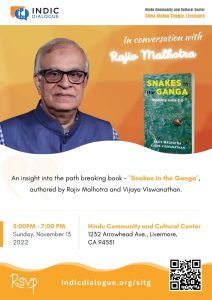
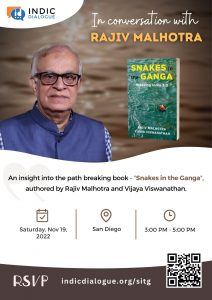
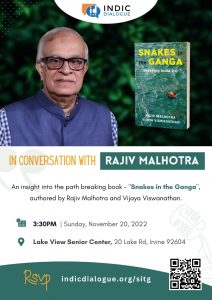 RSVP – IRVINE, CA
RSVP – IRVINE, CA